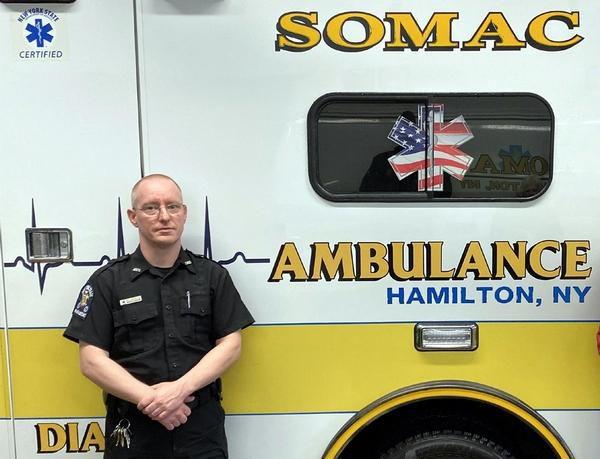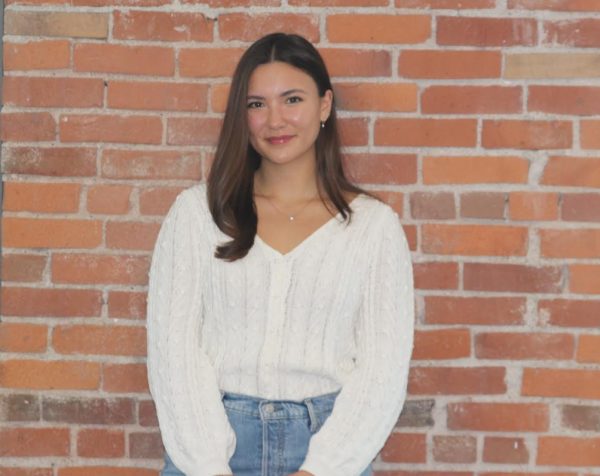Local Health Services Respond to COVID-19 Crisis Amid Staff Shortages
While local health services have long been preparing for the impact of COVID-19 in Hamilton, uncertainty regarding the continued extent of the crisis and the sudden departure of many Southern Madison County Ambulance Corps (SOMAC) and Hamilton Fire Department (HFD) student volunteers creates a potential hindrance to emergency response services.
The majority of Colgate’s student population left campus after the University officially advised students to return home if they are able on March 12, yet the Village of Hamilton still faces the COVID-19 pandemic’s impact.
As of March 24, the Health Department of Madison County, NY issued 105 tests for COVID-19 within the county, six of which tested positive as of press time. Forty-nine tests came back negative, and 50 are pending as of this story’s publishing. Hamilton has suffered one COVID-19 death as of press time, as announced in a statement from the Madison County Health Department.
“The news of the death of a Hamilton resident impacts us all as a community. We are saddened by the person’s passing, by the fact that this virus has touched our community in this way, and we are concerned about the spread of the virus,” Madison County Public Health Director Eric Faisst said in a message to the Town and Village of Hamilton.
Community Memorial Hospital (CMH) has implemented a series of rules to deal with COVID-19, including a no visitor policy except for patients in the Emergency Department and Comfort Care Patients, who are each allowed one visitor. These visitors cannot be under the age of 15 or show COVID-19 related symptoms such as a fever or cough. Additionally, CMH is asking that patients call before showing up to the hospital if they think they need a test for COVID-19.
Head Student Coordinator for the Hamilton Fire Department (HFD) and senior Eric Burguera has also been preparing his team for the coming impact. HFD contributes to Hamilton’s health services response with the aid of student volunteer firefighters who normally make up nearly half of the department’s staff, though only a small cohort remains since the closure of campus.
“We started thinking about the coronavirus in February, just being careful about what symptoms were described to us over the dispatch as well as preparing to utilize the protective equipment we have on hand if it was deemed necessary. This includes gowns, glasses, gloves and N95 masks. So far, we haven’t had many cases that have required a response from the fire department, but now for any call we do respond to we are wearing a full set of gear due to the fear of people being asymptomatic. Our main priority is to protect ourselves and the people we are responding to, and make sure that no one else gets it,” Burguera said.
Burguera said he feels that as of now the HFD is well-equipped to serve the Hamilton community in spite of potential challenges.
“So far, it’s been pretty normal. We’re filling up every single truck with the right amount of [firefighters]. The student volunteers all plan on staying until May. As long as everyone stays until then, we should be pretty good at the fire department,” Burguera said.
However, Burguera explained that a potential challenge could arise if essential training classes for first-year volunteer certification are canceled. A large portion of the volunteers are first-years, who are only certified as basic exterior firefighters, meaning they currently cannot enter an actual burning building. These training classes are meant to run into the end of the semester, at which time the first-years will become fully certified.
The decision on the status of these training classes won’t be made until next week, according to Burguera. If the classes are canceled, most of the first-year volunteers will likely return home, and HFD will have to rely on only four fully-certified student volunteers who remain in Hamilton serving HFD for the rest of the semester.
Burguera explained that he and other volunteers also must consider their own potential to spread the disease, and how to mitigate that risk.
“We’re responding to every single call fully equipped in the appropriate protection to ensure we can’t cause any harm to citizens,” Burguera said.
Burguera outlined what the next few months may look like as the community impact of the virus increases in intensity.
“If a lot of the community gets sick, we’ll have to see how much CMH can take. SOMAC and the Madison Ambulance Corps ultimately decide where [overflow] patients will be taken, but I imagine that most people will be taken to Syracuse or Utica. We don’t have advanced life support or an ambulance, so at some point depending on how all this progresses we might have to reduce our EMS capacity so we can more effectively focus on emergency fire calls,” Burguera said.
According to a SOMAC press release, the ambulance corps have been severely affected by the loss of over 40 student volunteers.
Head Paramedic and Director of Operations for SOMAC Kyle Sylvester encourages any interested licensed driver over 18 to contact him about serving as a volunteer driver. SOMAC also looks to fill part-time Paramedic or Emergency Medical Technician (EMT) positions.
“When Colgate closed suddenly last week in response to the spread of COVID-19, we lost the majority of our volunteers just as we were presented with an unknowable demand for our services in the near-term future,” Sylvester said.
Presently, SOMAC operates with three ambulances and a “fly-car,” a vehicle that responds to emergencies but does not transport patients, all certified at the Paramedic level. SOMAC currently employs 16 paid staff members in addition to eight community volunteers. Three members of the Town of Hamilton Highway Department, including Highway Superintendent Luke Dowsland, will serve as volunteer drivers while the Town’s operations are temporarily shut down.
“This temporary solution affords us two ambulances during the weekdays, each with a Paramedic and a driver or EMT,” Sylvester said. “Additional staff will be required if demand increases as we think it will. If we are unable to significantly increase our staffing levels we will only have one ambulance available most nights and weekends. This is of course if none of our staff gets sick.”
SOMAC student volunteer and sophomore James Cann explained that while the immediate threat of COVID-19 was not initially at the forefront of people’s radar, SOMAC began taking cautionary steps in early February.
“SOMAC started prepping and orienting themselves in the direction to be prepared for a very infectious virus to be in Hamilton. Notifications from the NY State Department of Health were sent to us about enhanced protective procedures for healthcare providers that prompted early action,” Cann said.
Dowsland elaborated on the safety procedures SOMAC staff were expected to follow.
“We take a lot of extra measures being in the position that we’re in, on the front lines, to make sure we don’t fall ill. All the Personal Protective Equipment (PPE) are provided by SOMAC. We wear gloves, N95 masks and Tyvek suits when we respond to a potential COVID-19 call,” Dowsland said.
Cann detailed the impact of the loss of student volunteers and EMTs on SOMAC.
“To qualify as a Basic Life Support (BLS) ambulance and be able to actually respond to a call, you need to have at minimum a certified driver and an EMT in the back of the ambulance. When you send home 40 people that are a mix of drivers, EMTs, or both, that’s gonna put a lot of strain on the paid staff members who are there full-time,” Cann said.
SOMAC Co-Student Coordinator and senior David Little added that Colgate did make staying on campus an option for students in SOMAC.
“I’m sure every member wanted to stay and help, however, [with] balancing schoolwork, limited on-campus resources, limited resources in the village and the pull of family and loved ones, most students ended up going home,” Little said.
Cann said that while the loss of student volunteers is significant, he feels confident in the capabilities of the remaining staff.
“The paid staff who are still at SOMAC are excellent providers, and I have complete confidence in them to handle the ongoing situation to the best of their ability. The loss of 40 students to the program is certainly going to add a strain, so that’s what I’m the most nervous about. I feel that SOMAC is responding to the loss well, and while the future is uncertain, I have no doubt that they’re doing everything that they can,” Cann said.
In SOMAC’s released notice, Sylvester explains that the majority of the strain comes from the expected increase in frequency and urgency of the 911 calls and emergent and non-emergent transfer services as a result of COVID-19.
“The demand has never been greater for increased staffing levels,” Sylvester said. “This is the time we need to come together as a community to help those in need.”
Dowsland elaborates on some of the challenges obstructing recruitment and financial repercussions brought on by the lowered rate of volunteerism.
“What we really need is area residents to volunteer regularly at these agencies, [but] it’s tough to recruit members. There’s a lot of misperception with EMS because it puts you at more of a risk to catch these illnesses [while on the front line], but we also have to respond in community members’ time of need,” Dowsland said. “EMS is a vital service to the area and without volunteers to fill those positions, that [necessitates] paid staff which is an extremely, extremely costly thing to have.”
Director of Student Health Services Dr. Merrill Miller said University staff work yearlong for the safety of the community in coalition with town and county services.
“Colgate’s workers spread out on this campus, in every building and on every roadway and pathway, working day and night — to keep us safe, including department managers and their entire staff. Additionally important are our community colleagues, who are working along with us, and us with them — the Madison County Department of Health, Community Memorial Hospital, and SOMAC Ambulance. We have also had wonderful communications from alumni, parents, faculty and staff with offers to help us acquire PPE or any other items that could be helpful. We’re all in this together,” Miller said.
Miller said while she’s proud of the community’s efforts, she recognizes the severity and difficulty of the situation.
“I am by nature an optimistic person. Yet, I am also a realistic person, and we are in the midst of a major, major, major, health crisis and many people are working hard to try and prevent this crisis from becoming a catastrophe,” Miller said.
Wynter Schnell is a junior from Pound Ridge, New York concentrating in political science with a minor in anthropology. He’s served as a news reporter...











